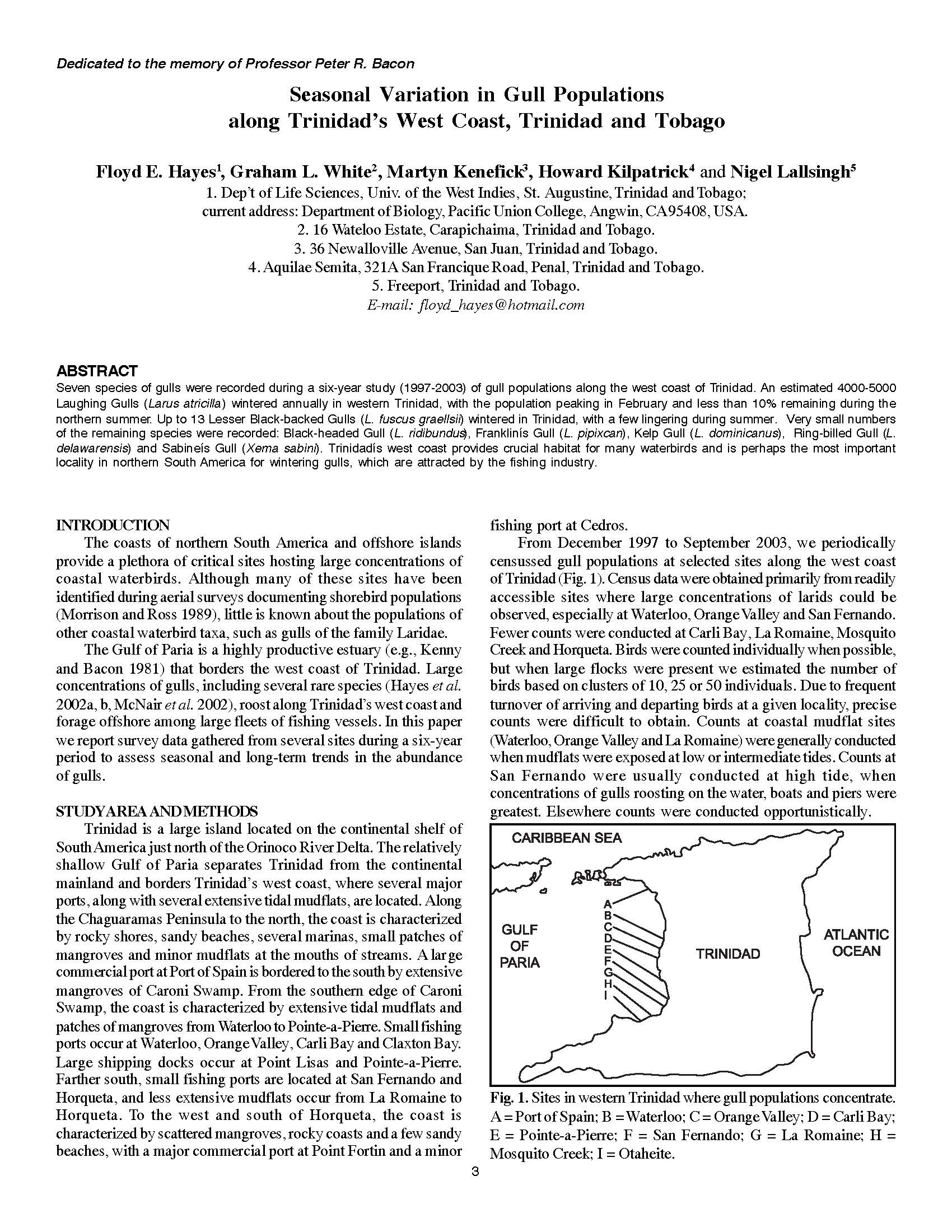Seasonal Variation in Gull Populations along Trinidad’s West Coast, Trinidad and Tobago
Keywords:
Gulls , Laridae , Laughing Gull, Larus atricillaAbstract
Seven species of gulls were recorded during a six-year study (1997-2003) of gull populations along the west coast of Trinidad. An estimated 4000-5000 Laughing Gulls (Larus atricilla ) wintered annually in western Trinidad, with the population peaking in February and less than 10% remaining during the northern summer. Up to 13 Lesser Black-backed Gulls (L. fuscus graellsii) wintered in Trinidad, with a few lingering during summer. Very small numbers of the remaining species were recorded: Black-headed Gull (L. ridibundus), Franklinís Gull (L. pipixcan), Kelp Gull (L. dominicanus), Ring-billed Gull (L.delawarensis) and Sabineís Gull (Xema sabini). Trinidadís west coast provides crucial habitat for many waterbirds and is perhaps the most important locality in northern South America for wintering gulls, which are attracted by the fishing industry.

